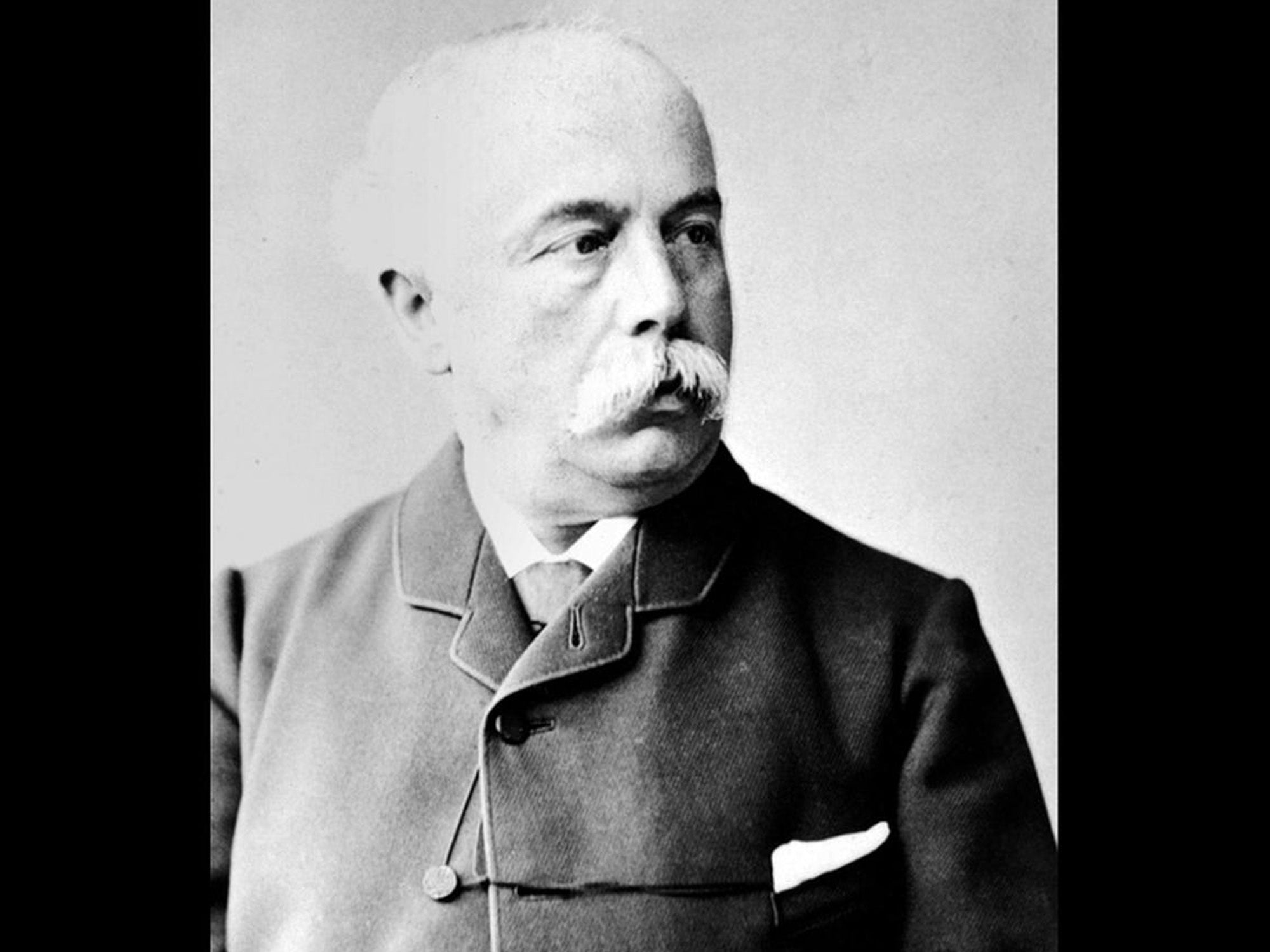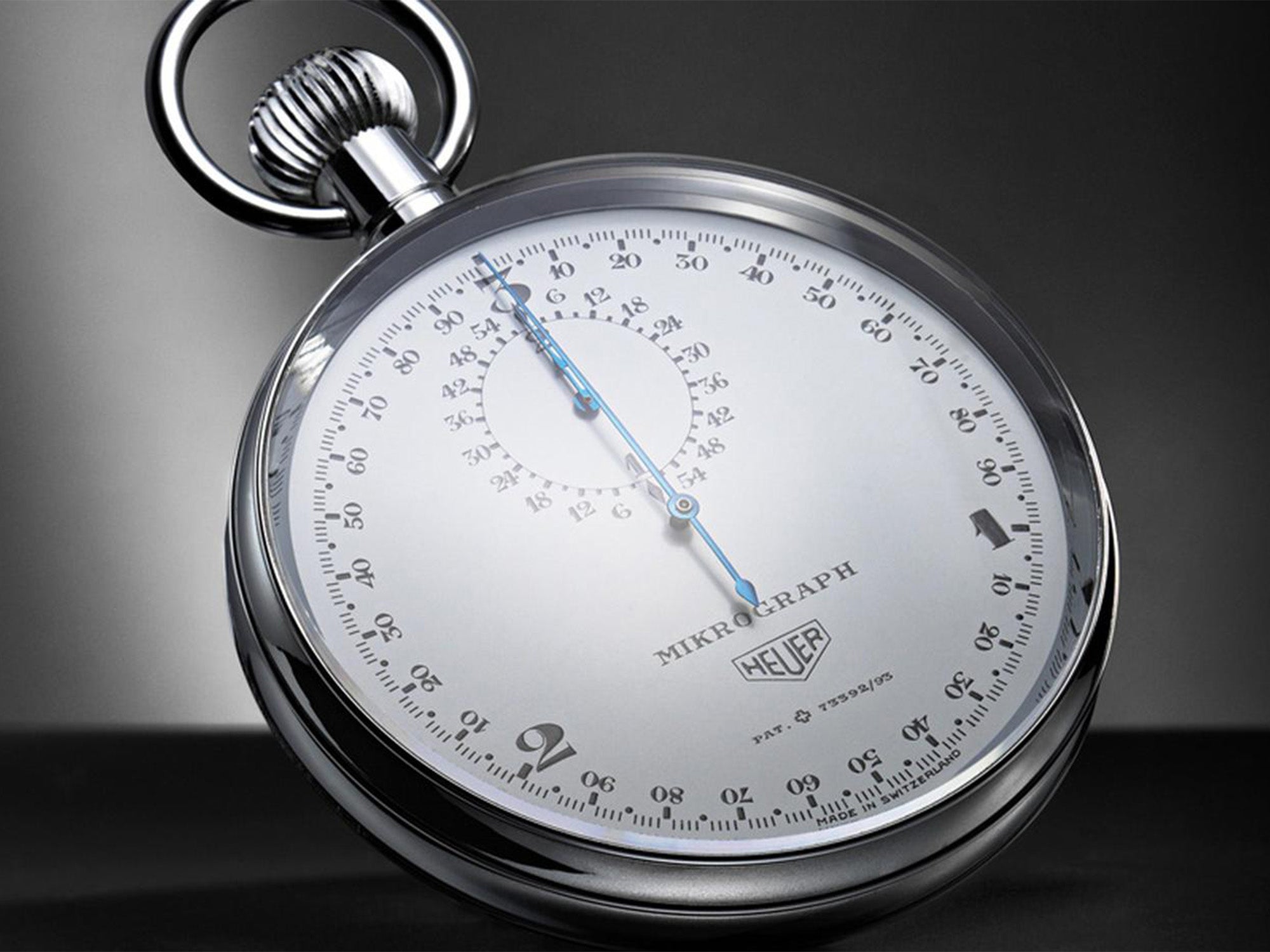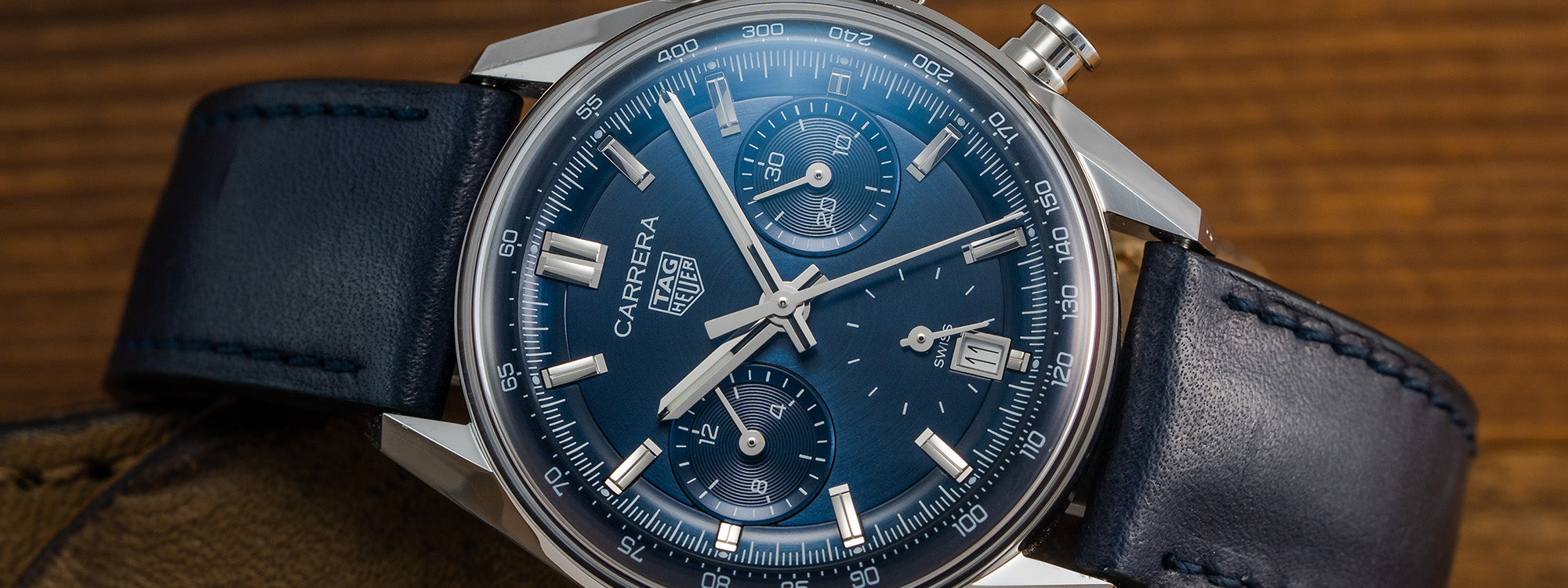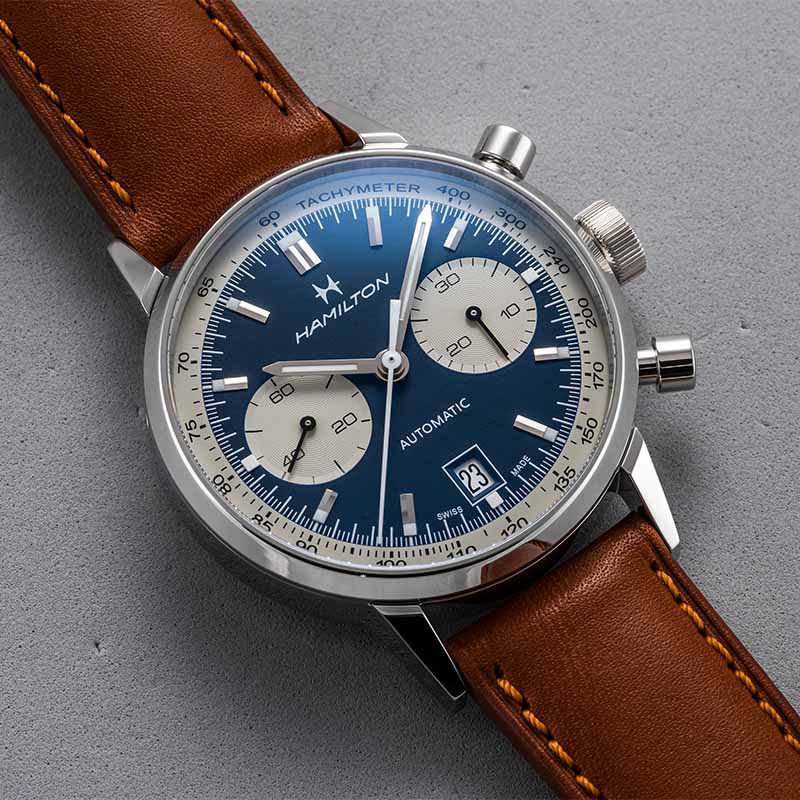The TAG Heuer Carrera is widely regarded as one of the OGs of racing-inspired chronograph wristwatches, and today — decades after both the model and the deadly road race that gave it its name appeared to have been permanently discontinued — it claims a spot atop the leaderboard in the Swiss watchmaker's modern collection. Here's how the Carrera raced to worldwide acclaim, upgraded its engines along the way, and roared back from the Quartz Crisis to engage and energize a new generation of watch enthusiasts.

The company we now know as TAG Heuer traces its history to 1860 and its founder Edouard Heuer; “TAG” would be added to the family business’s name in 1985, when the Techniques d’Avant Garde (TAG) Group obtained a majority share. From its beginnings, the company placed an emphasis on sports timing and on optimizing the precision of the hand-held and dashboard-mounted chronograph timepieces that were its specialty. Edouard Heuer’s most significant contribution to timekeeping was the oscillating pinion, patented in 1887. This device, which simplified the construction of chronograph calibers by decoupling the stopwatch mechanism from the timekeeping function, is still used commonly in movements today.

In 1911, Heuer developed what is regarded as the first dashboard chronograph for cars and aircraft, the “Time of Trip,” and in 1914 released its first wrist-mounted chronograph (which, like many of its contemporaries, was a repurposed pocket watch with its single-pusher crown at 12 o’clock). Edouard’s son, Charles-Auguste Heuer, continued the quest for chronographic precision in 1916 with the invention of the Mikrograph (above), a hand-held stopwatch that was the first in the world able to measure elapsed times to 1/100-second. In 1920, the Heuer Mikrograph was the official timer of the Olympic Games in Antwerp.
 In the realm of wristwatches, which began dominating the market after World War I, many of the firm’s most influential and memorable examples also had their origins in the pre-TAG era, and most were the brainchildren of Edouard Heuer’s great grandson, former CEO Jack Heuer (above, left, with racing drivers Niki Lauda and Clay Regazzoni), a motorsport enthusiast who ramped up the brand’s involvement in automobile racing and racing-driver sponsorships. Foremost among these watches is the Carrera, named after the treacherous Carrera Panamericana road race, the original version of which was run only five years, between 1950 and 1954.
In the realm of wristwatches, which began dominating the market after World War I, many of the firm’s most influential and memorable examples also had their origins in the pre-TAG era, and most were the brainchildren of Edouard Heuer’s great grandson, former CEO Jack Heuer (above, left, with racing drivers Niki Lauda and Clay Regazzoni), a motorsport enthusiast who ramped up the brand’s involvement in automobile racing and racing-driver sponsorships. Foremost among these watches is the Carrera, named after the treacherous Carrera Panamericana road race, the original version of which was run only five years, between 1950 and 1954.

Jack Heuer learned about the race, known as the most dangerous of its kind ever in the world, years later, while attending the 12 Hours of Sebring with two of his many friends from the racing world, Mexican drivers Pedro and Ricardo Rodriguez. The Rodriguez brothers’ harrowing tales of the Carrera Panamericana motivated Jack Heuer to conceive of the trendsetting chronograph, which launched in 1963. Alongside the similarly impactful Rolex Daytona, which debuted the same year, the original Heuer Carrera (Ref. 2447, above) proved to be a groundbreaking timepiece in the still-evolving genre of motorsport-inspired chronograph wristwatches. Among its notable innovations were the dial’s flange, which rose at a 45-degree angle from the periphery and hosted the minutes scale, an element usually found on the main dial; this function-focused detail improved the legibility of the main dial and its chronograph subdials, which were recessed into the dial for depth, imparting a three-dimensional appeal. The flange also served a technical purpose, as an inner tension ring that pressed firmly against the Plexiglas crystal to ensure a level of water resistance and sturdiness that made the Carrera robust enough to wear for car racing.
 The first-generation Carreras had 36mm steel cases and were outfitted with the manually wound Valjoux 72 chronograph caliber. Soon afterward came the element with which most of us associate the Carrera today: an engraved tachymeter scale on the stationary bezel, intended as a useful tool for the “gentleman drivers” to whom Jack Heuer was both marketing the watch and paying homage. The first models had three-register dials (small seconds, minutes counter, and 12-hour counter), and different versions joined those as the model grew into a collection, some with two subdials (small seconds and 30-minute or 45-minute counters), others with a date function, like the now-collectible Ref. 3147N "Dato," the first Carrera with a calendar function, revived in the modern limited edition pictured above. All of these Carrera watches were equipped with outsourced manual-winding mechanical calibers, the Valjoux 92 eventually superseding the Valjoux 72, until a major “engine overhaul” occurred in 1969.
The first-generation Carreras had 36mm steel cases and were outfitted with the manually wound Valjoux 72 chronograph caliber. Soon afterward came the element with which most of us associate the Carrera today: an engraved tachymeter scale on the stationary bezel, intended as a useful tool for the “gentleman drivers” to whom Jack Heuer was both marketing the watch and paying homage. The first models had three-register dials (small seconds, minutes counter, and 12-hour counter), and different versions joined those as the model grew into a collection, some with two subdials (small seconds and 30-minute or 45-minute counters), others with a date function, like the now-collectible Ref. 3147N "Dato," the first Carrera with a calendar function, revived in the modern limited edition pictured above. All of these Carrera watches were equipped with outsourced manual-winding mechanical calibers, the Valjoux 92 eventually superseding the Valjoux 72, until a major “engine overhaul” occurred in 1969.

That was the year that Heuer joined a consortium of its Swiss watchmaking competitors in the development of Caliber 11 “Chrono-Matic” (above), one of the first mechanical chronograph calibers with automatic winding, a technical breakthrough that had evaded watchmakers for decades. The “Chrono-Matic,” which emerged from the joint efforts of Heuer (at the time “Heuer-Leonidas,” after the former company had absorbed the latter), Hamilton-Buren, Breitling, and movement-specialist Dubois-Dépraz, debuted in May of 1969, several months behind Zenith’s El Primero and a few months ahead of Seiko’s Caliber 6139. Heuer installed its version of the new self-winding caliber in three of its chronograph models: the Carrera, the Autavia (a watch designed for both “AUTo” racing and “AVIAtion,” based on a 1930s dashboard clock), and its other famous motorsport-heritage wristwatch, the Monaco (which you can learn more about here).

Throughout the 1970s, Heuer Carreras contained versions of Caliber 11 and its successor, Caliber 12, both distinguished from the era’s other automatic chronograph movements by their unusual left-sided winding crown; and eventually also quartz movements, as the watch industry’s “Quartz Crisis” era ramped up. The decade also featured an expansion of Heuer’s footprint in the world of auto racing: the Carrera was seen on the wrists of iconic drivers including Ayrton Senna, Jacky Ickx, Niki Lauda, Clay Regazzoni, and Mario Andretti, and the Heuer logo could be glimpsed on the livery of cars from racing teams such as Ferrari, McLaren, and Porsche — the latter, a partnership that was revived in a big way in 2021. Despite the brand’s high-profile presence in the golden age of motorsports, however, the rise of inexpensive quartz timepieces, mostly from Asia, was squeezing the bottom line of traditional Swiss brands like Heuer by the time the 1980s rolled around. Jack Heuer sold the company in 1982 to an investment group headed by Swiss watch-industry firms Piaget and Nouvelle Lemania, which sold it again in 1985 to Techniques d’Avant-Garde, an industrial company involved with both the automotive and aviation businesses. The new owners’ agenda did not initially include mechanical watches, so the birth of TAG Heuer meant the end of the Carrera — at least for a while.

By 1996, despite the epitaph written for it during the quartz-dominated years prior, the luxury mechanical watch was again starting to show signs of life. TAG Heuer released a retro-look “tribute” edition (above) of the Carrera that year — it even had the vintage “Heuer” logo, sans “TAG,” which at the time must have taken quite a bit of convincing for the corporate types — and its success was enough to spark a larger revival of the Carrera line several years hence. Techniques d’Avant-Garde sold the brand in 1999 to the French luxury goods conglomerate LVMH (Moët Hennessy Louis Vuitton), which has owned it ever since. One of LVMH’s first major moves was to bring back semi-retired Jack Heuer, creator of the Carrera and Monaco, as Honorary Chairman. Jack proved to be an invaluable resource to the management team LVMH put in place, and the return of the classic racing watches he'd imagineered to the forefront of the collection signaled a return to its roots for the venerable Swiss watch company. 
The story of the TAG Heuer Carrera and its many design evolutions, limited editions, vintage revivals, and technical evolutions since the start of the 21st Century deserves an article all its own. However, the most recent overhauls of the Carrera can be traced to two significant anniversary years. One is 2020, which marked the 160th anniversary of TAG Heuer and brought with it two variations on the model: the dressier Carrera Chronograph, which features a 42mm case and a thinner bezel without a tachymeter scale; and the Carrera Sport Chronograph, with a larger 44mm size, a tachymeter bezel in ceramic or steel, and a more robust overall construction. The other milestone year was 2023, the Carrera model’s 60th anniversary year, which ushered in the more vintage-influenced Glassbox design and resurrected a cult classic sailor’s watch from the late 1960s. Here are the main pillars of the Carrera collection as it stands today.
TAG Heuer Carrera Chronograph Glassbox 39mm

Price: $6,450 - $21,500, Case Size: 39mm, Crystal: Sapphire, Water Resistance: 100 meters, Movement: Automatic Caliber TH20-00
TAG Heuer embraces the Carrera’s roots in a distinctly contemporary way with 2023’s Carrera Chronograph Glassbox, which derives its name from the vintage-inspired, domed sapphire crystal that rises over the 39mm steel case, evoking the shape of the Hesalite crystals on the 1960s models. The crystal’s prominent curve flows seamlessly over the tachymeter scale at the outer edge of the dial, allowing it to be read legibly in a wider range of angles. The case’s pump-style pushers have also been carefully reshaped and repositioned to make them as user-friendly as possible. Inside is the TAG Heuer TH20-00 caliber, a re-engineered version of the Heuer 02 movement in the 42mm models, with a new bidirectional winding system meant to increase efficiency of the winding and to enable a longer, 80-hour power reserve. The Carrera Chronograph Glassbox is offered in either a monochromatic blue colorway or a vintage-look silver-and-white “reverse panda” execution on a perforated strap that evokes classic 1960s references like the Ref. 3147 “Dato 12.”
TAG Heuer Carrera Chronograph 42mm

Price: $5,850 - $6,300, Case Size: 42mm, Crystal: Sapphire, Water Resistance: 100 meters, Movement: Automatic Caliber Heuer 02
As alluded to above, the 42mm Carrera Chronograph models, launched in 2020, adopt the more understated, streamlined look of the 1963 original, which did not incorporate the familiar, tool-oriented tachymeter bezel of subsequent models. The watches contain the in-house automatic Heuer 02 movement, whose attributes include an integrated chronograph function, driven by a column wheel and a vertical clutch, and an impressive 80-hour power reserve, which improves on that of all previous calibers used in the Carrera, outsourced and in-house. Two azurage-pattern subdials at 3 and 6 o’clock tally the elapsed minutes and hours while a discreet, borderless subdial at 6 o’clock tracks the running seconds and shares space with a small date window. The chrono pushers are in the retro “pump” style of the 1963 originals and the watches in their various colorways are available on steel H-link bracelets or alligator straps.
TAG Heuer Carrera Sport Chronograph 44mm

Price: $4,950 - $7,050, Case Size: 44mm, Crystal: Sapphire, Water Resistance: 100 meters, Movement: Automatic Caliber 16 (ETA 7750 base)
The other big anniversary launch of 2020, the 44mm Sport Chronograph, channels more recent iterations of the Carrera, with its stationary bezel, in steel or ceramic, with inscribed tachymeter scale. The models’ steel cases, with an array of brushed and polished finishes and pump chronograph pushers, are subtly larger than their immediate predecessors by 1mm, with shorter lugs for a more comfortable wrist fit. The dials are similar to those of the more elegant, sans-tachymeter models, with a few subtle differences, like the more angled slant of the indexes and the more pronounced treatment of the 6 o’clock small seconds subdial, which is recessed like the chronograph counters at 3 and 9 o’clock and sports an opaline finish and an Arabic numeral "60." Behind a screwed-down caseback with a sapphire exhibition window beats the automatic Heuer 02 caliber, providing the watch 80 hours of power.
TAG Heuer Carrera Date

Price: $3,200 - $3,400, Case Size: 39mm, Thickness: 11.5mm, Crystal: Sapphire, Water Resistance: 100 meters, Movement: Automatic Caliber 5 (Sellita SW200-1 base)
TAG Heuer has expanded the Carrera collection with more streamlined, non-chronograph versions in recent years, with the latest generation of these “Carrera Three Hands” models arriving in 2021. The simplest execution can be found in the Carrera Date, with a 39mm stainless steel case and an array of colorful sunburst dials hosting baton hands, applied indexes, and a date window at 6 o’clock. TAG Heuer also offers models of the Carrera Date in unisex 36mm and feminine 29mm sizes, several with mother-of-pearl dials and/or diamond indexes. The movement in the 39mm watch is the Sellita-based Caliber 5, with automatic winding and a 38-hour power reserve.
TAG Heuer Carrera Day-Date
Price: $3,350 - $3,650, Case Size: 41mm, Thickness: 12.37mm, Crystal: Sapphire, Water Resistance: 100 meters, Movement: Automatic Caliber 5 (Sellita SW200-1 base)
The Carrera Day-Date offers a step up in both case size and calendar complexity while remaining more understated on the wrist than the chronograph versions of the Carrera. The 41mm stainless steel cases of the Day-Date are mounted on either H-shaped steel link bracelets or leather straps. The date is moved from 6 o’clock to 3 o’clock on this model, side by side with the day of the week, in a faceted double window, thanks to a modification of the automatic Caliber 5, which also offers a quick correction of the date display and is on display behind a sapphire exhibition caseback.
TAG Heuer Carrera Twin Time
 Price: $7,100 - $7,450, Case Size: 45mm, Thickness: 16.64mm, Crystal: Sapphire, Water Resistance: 100 meters, Movement: Automatic Caliber Heuer 7
Price: $7,100 - $7,450, Case Size: 45mm, Thickness: 16.64mm, Crystal: Sapphire, Water Resistance: 100 meters, Movement: Automatic Caliber Heuer 7
Also housed in a 41mm stainless steel case, and powered by the Heuer Caliber 7 automatic movement, is the Carrera Twin Time, a three-hand, sans-chrono model that features a GMT complication. The blue sunburst dial has rhodium-plated hands, a 6 o’clock date window, and a red-tipped central GMT hand, which points to the time in a second time zone via a bicolor silver-and-blue 24-hour scale on the flange; the two sectors of the scale, which replaces the Carrera’s traditional minutes/seconds ring, represent nighttime and daytime hours. The self-winding movement beating inside the ergonomically sculpted case is based on either the ETA 2895-2 or the Sellita SW300, both reliably robust Swiss-made mechanisms.
TAG Heuer Carrera Skipper

Price: $6,750, Case Size: 39mm, Thickness: 13.9mm, Lug to Lug: 46mm, Crystal: Sapphire, Water Resistance: 100 meters, Movement: Automatic Caliber TH20-06
In 1967, TAG Heuer used the Carrera, as the base for its fondly remembered sailor’s watch called the Skipper. The newest version of that model, unveiled in 2023, adopts the vintage-look, bezel-less “glassbox” design of recent Carrera models for its modest, period-appropriate 39mm steel case. The circular-brushed blue dial hosts two sharply contrasting subdials, one at 9 o’clock — in a teal color inspired by the deck of the Intrepid, the yacht once sponsored by Heuer in the America’s Cup — to record 12 elapsed hours; the other at 3 o’clock for the all-important 15-minute countdown to the start of a regatta. The latter subdial is subdivided into three colorful sectors for each five-minute interval — Intrepid Teal, Lagoon Green, and vivid Regatta Orange for the final five minutes. The running seconds and a date window share the 6 o’clock position. The movement inside is TAG Heuer’s automatic TH20-06, a slightly modified version of the chronograph caliber inside the Carrera, and the navy-blue strap is made of water-resistant textile.
TAG Heuer Carrera Chronograph Tourbillon

Price: $24,050, Case Size: 42mm, Crystal: Sapphire, Water Resistance: 100 meters, Movement: Automatic Caliber TH20-09
TAG Heuer achieved a watch-world milestone in 2016 with the release of its first tourbillon watch, whose movement combined a “flying” tourbillon escapement with a chronograph, and which boasted both a COSC chronometer certification and an MSRP that was tens of thousands of dollars lower than most tourbillon-equipped timepieces. The latest versions of the Carrera Chronograph Tourbillon contain the automatic caliber TH20-09, based on the earlier Heuer 02-T, developed in-house by the brand — which features automatic winding (still a relative rarity in a tourbillon), a frequency of 4 hz (28,800 vph), an integrated, column-wheel-controlled chronograph, and a power reserve of more than 65 hours in a single barrel. The cage of the flying tourbillon, placed on the dial at 6 o’clock, is exceptionally lightweight, with parts made of titanium and carbon, and serves as a running seconds counter. Bordering the tourbillon cage at 3 and 9 o’clock are the subdials for elapsed chronograph minutes and hours. TAG Heuer introduced a 250-piece limited edition in a blue colorway and a titanium case and bracelet in 2021, and followed it up in 2024 with a model in brushed steel with a striking teal sunburst dial.























































1 Comment
Am I the only one who remembers the iconic Heuer “stopwatch” ticking away while timing the 60 Minutes show on TV? It is still used today but sans any branding. I was in the retail jewelry business when TAG purchased Heuer. As soon as the rebranded models appeared in our cases the customer (and salespeople) confusion set in and sales began to decline. General consensus being that since no one knew who TAG was, it obviously wasn’t the same company as it once was. And the shift to a heavy quartz non-chronograph lineup did not make matters better. Can you imagine going into a store and seeing Swatch Longines, Swatch Hamilton, etc? LVMH is a highly successful company because of the quality of their products and how they merchandise and promote their products. Simply put, let the brand name generate the demand by their history and continuation of upscale quality and desirability. LVMH as the owners of the brand should simply remove TAG and revert back to the original Heuer logo and name. Want to complete successfully against Longines & Omega? Thin out the quartz models and begin using in-house or in-house modified movements. Who is buying $1500+ quartz watches these days?